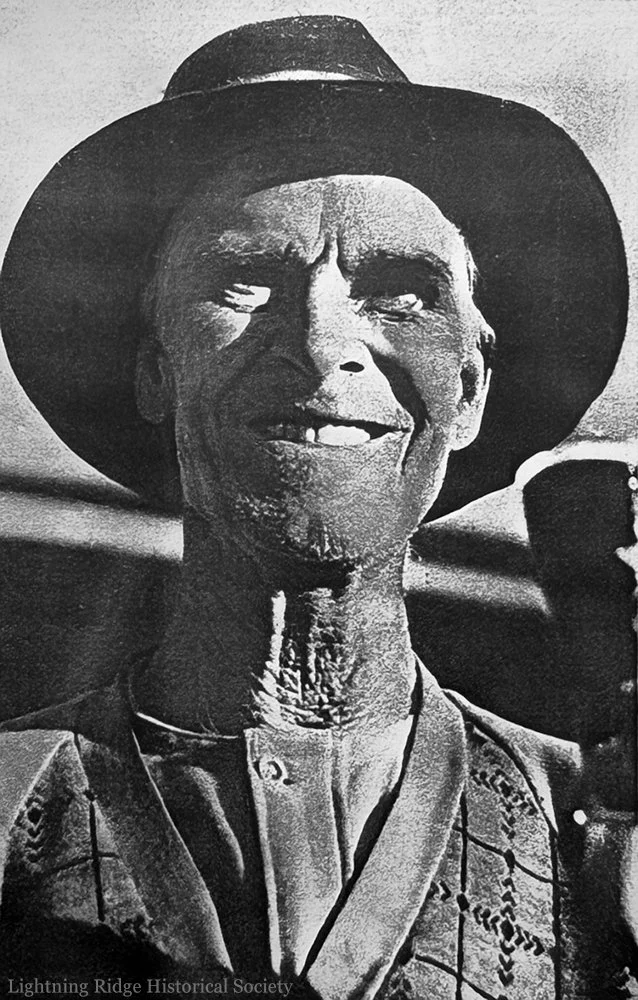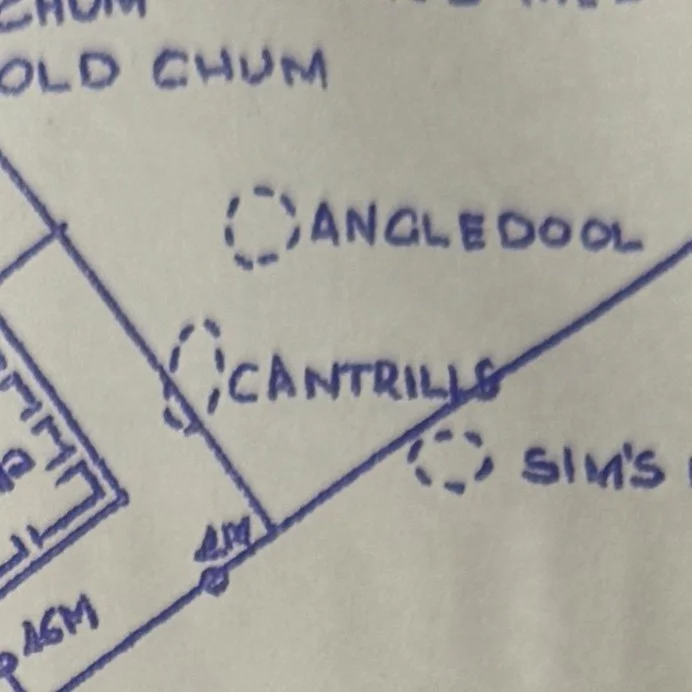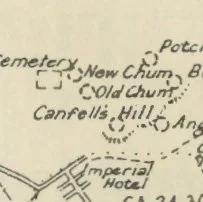Canfell’s
Mick Canfell.
Canfell’s (sometimes Cantrill’s, Cantwell’s, Campbell’s, and not to be confused with Campbell’s Hill) is an early opal field located about a quarter of a mile north-east of the original town centre.
The field was not discovered by the Canfell brothers, despite the name. Stuart Lloyd attributes the find to Bob Buckley, although the best claims on the field were later worked by Mick, Tom, and Jim Canfell, along with Ned Hanlon, Kirk and Maher, and Archie Gillespie. The Canfell brothers were shearers who began mining at the Ridge around 1903, and were among the earliest miners on the field. They reportedly found gem-quality black opal within a week of reaching level, followed by a second find described as “enough to fill a lady’s stocking.”
Canfell’s was known for its quality opal. Miner George Low described it as “always gem stuff.” Opal was worked at depths between two and thirty feet, with the main level running evenly through the hill. The ground near the crest reached around 20 feet deep.
According to The Lightning Ridge Book by Stuart Lloyd, the field had produced £76,000 by 1967.
Pictured above are various instances of Canfell’s being misspelled or mislabeled on official maps. First is a Lands Department map dated 1906-08. Then an internal map used by the Department of Mines for issuing claims and tenements. Finally a Government map reproduced in The occurrence of opal at Lightning Ridge and Grawin with geological notes on County Finch (Whiting & Relph, 1962) which seems to conflate Canfell’s with nearby Campbell’s Hill.
Article: Research by Russell Gawthorpe and Leisa Carney, edited by Russell Gawthorpe. LRHS research compiled by Len Cram and Barbara Moritz. Sources: The Lightning Ridge Book, Stuart Lloyd, 1967, p. 62; Lightning Ridge - The Home of the Black Opal: Unique to the World, Gan Bruce, 1983, pp. 75-76; The occurrence of opal at Lightning Ridge and Grawin, with geological notes on County Finch, J. W Whiting & R. E. Relph, 1958, p. 9; Discover Opals: Before and Beyond 2000 with Surface Indications, Stephen Aracic, 1996, p. 139.




